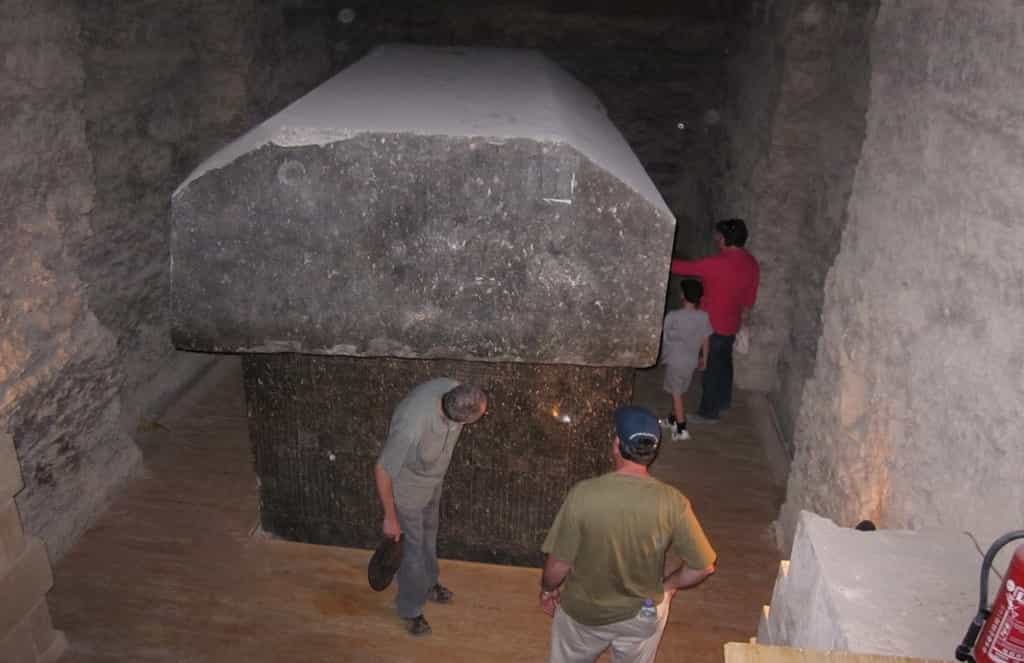Saqqara, situated near the ancient Egyptian capital of Memphis, harbors the oldest surviving pyramids from Pharaonic Egypt.
It stood as a favored necropolis among the pharaohs and the ruling elite, remaining one of the most archaeologically affluent sites in ancient Egypt, continuing to yield surprises to this day.
The Serapeum of Saqqara, an underground necropolis situated to the north of Saqqara – and approximately 20 kilometers south of Cairo – served as the burial ground for the sacred bulls, representative of the god Apis. These bulls were mummified and interred for over a millennium.
In 1851, the French Egyptologist Auguste Mariette (1821-1881) rediscovered the colossal sarcophagi that had once housed around thirty sacred oxen, although they had been plundered centuries before.
Scholars speculate that the Serapeum was established by Pharaoh Amenhotep III, one of Egypt’s most prominent pharaohs, who ascended the throne in 1386 BC at the age of merely 12 and reigned for close to 40 years.
The sacred bulls remained undisturbed in their original resting place until the era of the Roman Empire.
The veneration of the bull Apis is documented in the Palermo Stone from the First Dynasty. Apis was revered in Memphis during its lifetime as the embodiment of the ka of Ptah, the creator god. However, upon its death, it was assimilated into Osiris, the god of resurrection, and was known as “The Herald of Ptah.”
The ritual burials of the Apis bull reached their peak later on. Upon the death of an Apis bull, an extensive and intricate ritual commenced, aiming to facilitate the bull’s rebirth. These revered bulls were interred in sarcophagi crafted from monolithic stone blocks.
The Serapeum of Saqqara, unearthed at a depth of twelve meters, comprises three passages. The main passage measures 68 meters in length, 3 meters in width, and 4.5 meters in height, with 24 side chambers hewn into the rock, ranging from 6 to 11 meters in length and 3 to 6 meters in width.
Each chamber housed an immense chest made of basalt, black granite, pink, or limestone, weighing between sixty and eighty tons, most approximately 4 meters in length, 2.3 meters in width, and 3.3 meters in height, each topped with a corresponding cover of the same material, some inscribed with engravings.
The archaeologist Auguste Mariette unearthed this legendary site in 1851. However, the twenty-four discovered sarcophagi had been looted. Additionally, he uncovered the famous statue of the “seated scribe” at this location, considered one of the most exquisite Egyptian sculptures.







